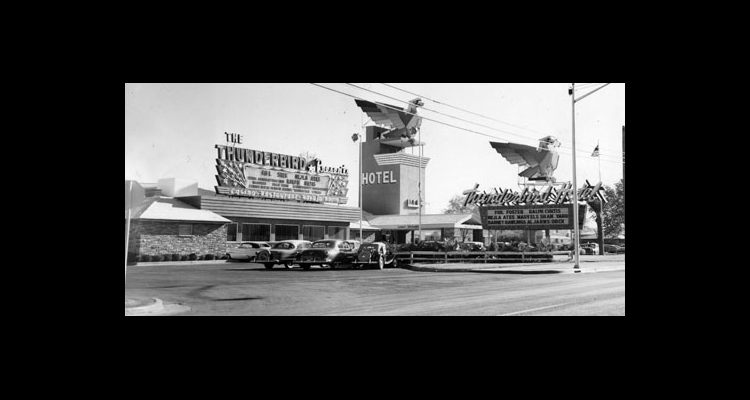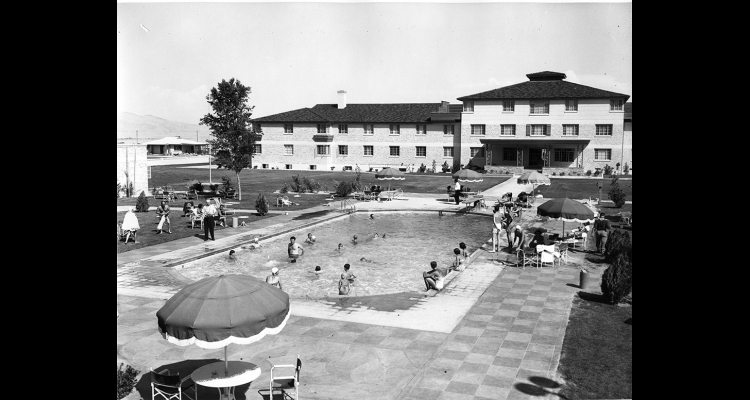Thunderbird Casino
In October 1947, Marion Hicks, a Los Angeles contractor and a partner in Las Vegas' El Cortez Hotel and Casino, and Clifford Jones, Nevada's lieutenant governor, began construction on the Thunderbird Hotel. The site they had purchased sat on the fledgling Las Vegas Strip on Highway 91 across from the El Rancho Vegas, and about a mile north of the one-year-old Flamingo. Hicks and Jones completed the Thunderbird in September 1948, and despite losing $145,000 to craps players on opening night, it became a financial success.
The Thunderbird, named after a Navajo tribal legend, had a Native American theme that was reflected in its public fireplaces, portraits, and names such as the Pow Wow Showroom. Atop a tower above the hotel's roof stood a large, colorful neon eagle, which became an enduring Las Vegas icon. A second, smaller bird roosted on the hotel's tall street sign overlooking the Strip. Built just as post-World War II travelers were discovering Las Vegas, the Thunderbird proved so popular that Hicks added 170 guest rooms to its 76 original rooms.
The Thunderbird appealed to both tourists and local families who were drawn to its restaurants. In addition, it attracted celebrities such as millionaire aviator Howard Hughes and Nevada's U.S. Senator Pat McCarran, who adopted it as his center of operations while in Las Vegas. The Thunderbird also helped establish Las Vegas as a center for conventions and trade shows. By 1953, the growing demand for guest rooms motivated Hicks to add a separate 110-room motel and bar-restaurant called the Algiers.
In the mid-1950s, the Thunderbird became the focal point of a Congressional investigation into organized crime involvement in Las Vegas casinos. The outcome of the Kefauver Committee hearings led to tougher state oversight of gambling operations with the creation of the Nevada State Gaming Control Board.
Despite the controversy, the Thunderbird remained profitable into the early 1960s. But even after renovation projects, business waned throughout the 1960s and 1970s when a succession of owners could not give the Thunderbird the sophistication of the newer Strip hotels. Veteran casino executive Ed Torres bought the property in 1981. He renamed it the El Rancho after the pioneer strip resort which burned down in 1960. Torres removed the classic neon eagles and replaced them with a new sign and a Spanish Mission theme.
By the 1980s, the former Thunderbird, like the other venerable Strip hotels built in the 1940s and 1950s, was in a deep decline. A relic of the past, the El Rancho was too old and never caught on.
In 1992, Torres started closing sections of the hotel until the El Rancho ended its run on July 6, 1992. The complex of brick buildings was demolished in 2000. Today a condominium development occupies the former site.
Article Locations
Related Articles
None at this time.



